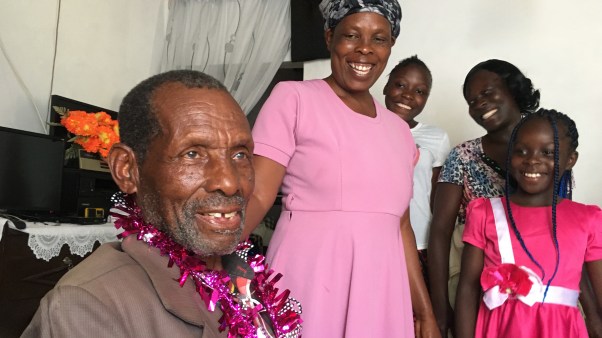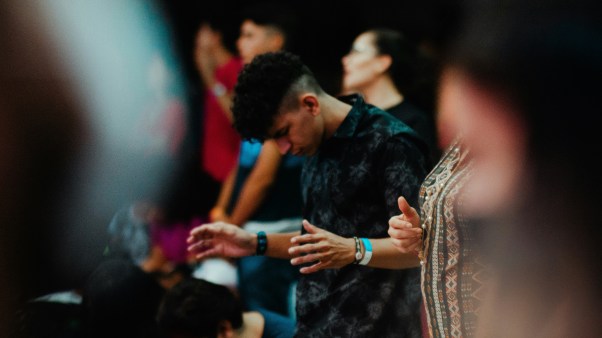The US-brokered peace deal between Israel and Hamas brought hope of imminent relief to Gazans who have suffered under the two-year war. Yet Gaza residents are still struggling to feed their families, said Osama Sawarih, a Muslim-background believer in the Palestinian territory.
In June and July, Sawarih secured food by visiting one of the Gaza Humanitarian Foundation’s (GHF) four aid sites. He eventually stopped as he found the sites unsafe.
Now Sawarih is feeding his family with food he bought from Gazans who had hijacked aid trucks over the course of the past three months. He has made seven trips to buy aid that was intended for free distribution but wound up in the hands of looters and gangs after the United Nations relaunched aid deliveries in mid-July.
Israel stopped all aid deliveries between March and May, citing Hamas’s purported theft of the deliveries. The blockade created a hunger crisis that made relaunching aid deliveries a dangerous and unstable endeavor.
When the aid-truck looting first began in July, a 55-pound bag of flour cost $120 USD, Sawarih said. Christianity Today agreed not to use Sawarih’s real name, as converts to Christianity face danger in Gaza.
After the October 10 cease-fire that led to the release of all remaining living Israeli hostages, more aid began to arrive and the price of flour went down to $9.
Then, this week, as the cease-fire threatened to tank and Israel announced the southern Rafah crossing would remain closed, the price of flour increased to around $30, Sawarih said.
“If the news of the crossing’s closure is announced, the merchants hide the goods and raise the price double,” he added.
On Sunday, Israel carried out a wave of strikes across Gaza after two Israeli soldiers died from a rocket attack. Hamas denied responsibility.
The soldiers were in the area designated as an Israeli security zone, east of the “yellow line.” Trump’s 20-point plan includes a temporary Israeli security buffer that currently makes up 53 percent of the enclave, which will be reduced incrementally.
At least 26 Palestinians died in the retaliation, according to the Hamas-run Gaza health ministry, which does not distinguish between civilians and combatants. President Trump insisted the cease-fire was still in place and suggested Hamas leadership may not have been involved in the attack against the soldiers.
Dozens of Palestinians have also died in Hamas-led executions in Gaza City, in what many analysts claim were attempts to defeat anti-Hamas clans as the terrorist group emerged from hiding in the wake of the cease-fire.
Meanwhile, US Middle East envoy Steve Witkoff and advisor Jared Kushner arrived in Israel on Monday to ensure the cease-fire remains intact and to address some of the thornier issues in the second phase of the plan, including the disarmament of Hamas and the formation of a stabilization force in the enclave.
Vice President JD Vance joined the diplomats a day later and said the cease-fire process is going “better than expected” but called for “a little bit of patience.” Hamas has yet to return all the bodies of deceased hostages, including some potentially buried under rubble or in unknown locations, Vance said.
Vance also warned that “if Hamas doesn’t cooperate, it will be obliterated.” He did not give a deadline for the group’s disarmament. Earlier this week, Vance announced the creation of a civilian military coordination center in southern Israel, where 200 US troops are actively working alongside international delegations and the Israeli military to promote stability and to rebuild Gaza.
Hanna Massad, founder of the nonprofit Christian Mission to Gaza (CMG), keeps in close touch with friends and church members in Gaza. They told him that the Hamas attacks against locals in Gaza City are less severe now than when the cease-fire was first announced but that people are still nervous.
Gazans are also waiting for more food deliveries. “The aid is coming in, but not as expected,” Massad said. He has heard reports of the United Nations facing challenges with their deliveries.
The armed looting of trucks has continued despite the cease-fire, preventing even distribution. Throngs of people attacked a 10-truck aid convoy arriving from Egypt on October 12, according to The New York Times. A metal cage covered with barbed wire protected the driver.
Members of Gaza Baptist Church in Gaza City have vegetables but no meat or eggs, due to limited quantities of aid reaching the northern city and to inflated prices, Massad noted. The costs of other items have decreased since the cease-fire but have not yet reached pre-war levels.
Together with their ministry partners in Gaza, CMG has continued its food program and plans to distribute 9,000 hot meals of rice and vegetables to Gazans this month. Massad hopes to expand deliveries in the north, where needs are more acute.
Sawarih said the flow of aid in the south is ramping up but also encountering hiccups.
On October 12, Egypt sent its largest-ever aid convoy to Gaza with 400 trucks delivering 9,000 tons of food and supplies. According to the UN World Food Program, an average of 750 metric tons of food are entering the enclave daily—far below the 2,000 metric tons needed to make up for the shortages.
Most of the Egyptian trucks passed through Israel’s Kerem Shalom crossing. The Rafah crossing, Egypt’s primary border crossing into Gaza, was slated to reopen for humanitarian aid under Trump’s plan. But on October 18, Israeli prime minister Benjamin Netanyahu said Hamas must return the bodies of the remaining deceased hostages before it opens.
Sawarih said the process for acquiring the Egyptian aid involves submitting a list of married adults in your clan to the Egyptian Committee, a Cairo-based relief agency, on WhatsApp. His clan is among those who have not received approval, yet “there are lists of large families that have received aid more than once,” Sawarih noted.
He has heard that the GHF sites are closed. A GHF spokesperson told several news agencies last week that the organization has paused operations during the hostage release phase of the cease-fire, but added that its long-term mission to deliver aid remains in place.
Meanwhile, a spokesperson from North Carolina–based Samaritan’s Purse told CT that its direct distributions of food rations at GHF sites are currently suspended “due to the recent developments from the peace agreement,” but that it continues to work with local partners in Gaza to provide critical assistance to families in need. The Christian nonprofit began distributing food, including sachets with fortified peanut butter, in early August.
Despite the hurdles, Sawarih said he is optimistic about an end to the war and hopes for progress at the Gaza reconstruction conference next month. The gathering in Cairo will seek international donors and private sector financing for the rebuilding of Gaza. According to the United Nations, around 78 percent of Gaza’s buildings have been damaged or destroyed.
As Sawarih waits for his aid-delivery approval and the day when food will no longer be scarce, he prays for a continued cease-fire and that “Hamas will no longer be present in Gaza in any form.”














